What is Ecological Succession?
Definition: Ecological succession is the gradual and sequential replacement of one community by the other in an area over a period of time. According to E.P. Odum (1971), the ecological succession is an orderly process of community change in a unit area. It is the process of change in species composition in an ecosystem over time. In simpler terms, it is the process of Ecosystem Development in nature.
Population Vs Community
Population: The group of individuals of a particular species occupying in a unit area. Example: population of Aedes aegypti (yellow fever mosquito) in an area.
Community: A community can be defined as a combination of different populations in an ecosystem. For example a pond ecosystem may consist of populations of Spirogyra (algae) Diatoms, Frogs, Fishes and Insects.
| You may also like NOTES in... | ||
|---|---|---|
| BOTANY | BIOCHEMISTRY | MOL. BIOLOGY |
| ZOOLOGY | MICROBIOLOGY | BIOSTATISTICS |
| ECOLOGY | IMMUNOLOGY | BIOTECHNOLOGY |
| GENETICS | EMBRYOLOGY | PHYSIOLOGY |
| EVOLUTION | BIOPHYSICS | BIOINFORMATICS |
The community in an ecosystem is NOT stable. It passes through many developmental stages in definite sequence over a period of time. These developmental stages in most of the cases will be from simple to complex and it is collectively called as community dynamics.
Process of Ecosystem Succession
The ecological succession is a complex process and it may take thousands of years. Frederic Clements in 1916 for the first time proposed the sequential phases of an ecological succession. The process of succession is completed through a series of sequential steps as given below:
(1). Nudation
(2). Invasion
(3). Competition and Co-action
(4). Reaction
(5). Stabilization (climax)
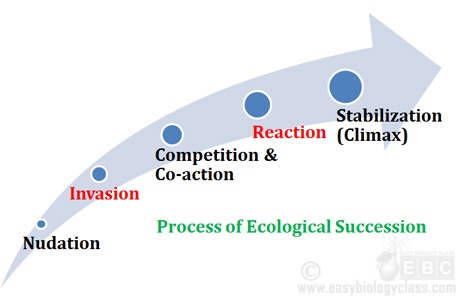
(1). Nudation
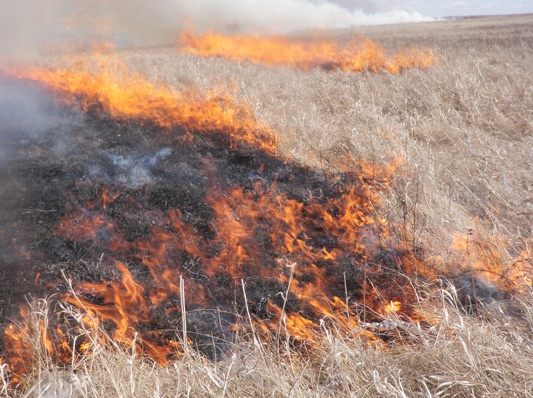 Ø Definition: Nudation is the development of a bare area (an area without any life form).
Ø Definition: Nudation is the development of a bare area (an area without any life form).
Ø It is the first step in ecological succession.
Ø The causes of nudation are:
(a). Topographic: Soil or topography related causes such as soil erosion, sand deposit, landslide and volcanic activity results in the formation of a bare area.
(b). Climatic: Destruction of the community due to glaciers, dry period and storm.
(c). Biotic: It includes forest destruction, agriculture and disease epidemics which results in the total destruction of the population in an area.
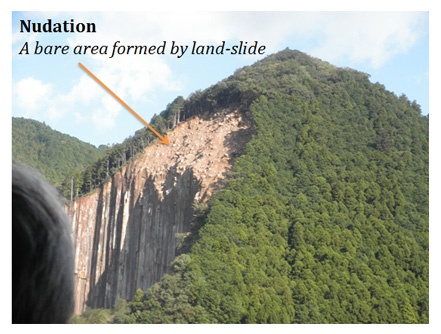
(2). Invasion:
Ø Definition: Invasion is the successful establishment of a species in the bare area.
Ø It is the second step in ecological succession.
Ø A new species reaches the newly created bare area and they try to establish there.
Ø The process of invasion is completed in THREE steps:
(A). Migration
(B). Ecesis
(C). Aggregation
(A). Migration (Dispersal):
$ Seeds, spores, propagules of a species reach the bare area due to migration.
$ The migration can be achieved through air or water medium.
(B). Ecesis:
$ Ecesis is the process of successful establishment of a species in the bare area.
$ The seeds or spores that reached the new area due to migration will germinate, grow and reproduce.
$ Only a few progenies will survive due to the harsh environmental condition prevailing in the area.
(C). Aggregation:
$ After ecesis, the individuals of a species increase their number and they stay close to each other. This process is called aggregation
[table “” not found /]
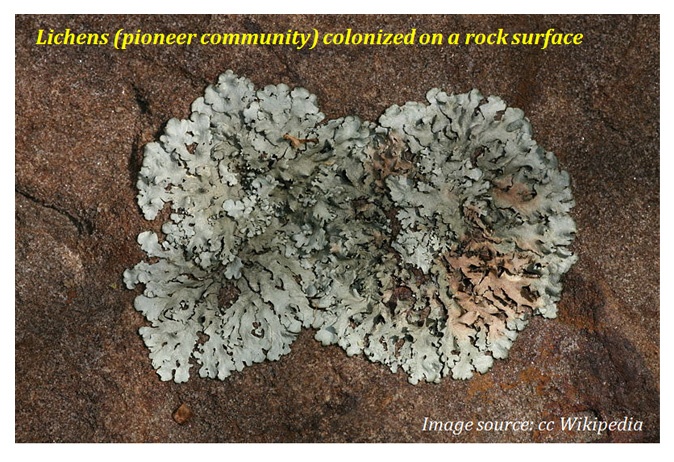
image source: cc wikipedia
(3). Competition and Co-action
Ø Aggregation results in the increase of the number of species within a limited space.
Ø This results in competition between individuals for food and space.
Ø The competition may be intra-specific (individuals within a species) or inter-specific (individuals between species).
Ø Individuals of a species affect each other’s life in various ways and this is called co-action.
Ø Competition and co-action results the survival of fit individuals and the elimination of unfit individuals from the ecosystem.
Ø A species with wide reproductive capacity and ecological amplitude only will survive.
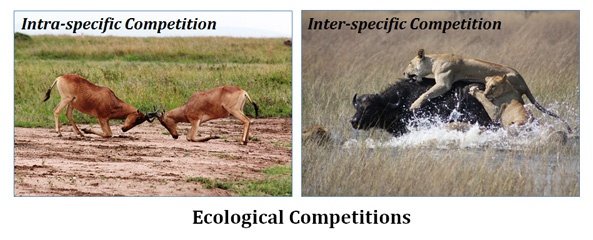
(4). Reaction
Ø Reaction is the most important stage in the ecological succession.
Ø It is the modification of the environment through the influence of living organism present on it.
Ø Reaction cause change in soil, water, light and temperature of the area.
Ø Due to these modifications, the present community becomes unsuitable for the existing environmental conditions.
Ø Such communities will be quickly replaced by another community.
Ø The whole sequence of communities that replaces one another in the given area is called sere (sera).
Ø The various communities contributing sere are called seral communities or seral stages.
(5). Stabilization (Climax)
Ø It is the last stage in ecological succession.
Ø The final or terminal community becomes more or less stabilized for longer period of time.
Ø This community can maintain its equilibrium with the climate of the area.
Ø This final community is called the Climax Community (climax stage).
Ø The climax community is not immediately replaced by other communities.
Ø Climax community is determined by the climate of the region.
Ø Example of climax community: Forest, Grassland, Coral Reef
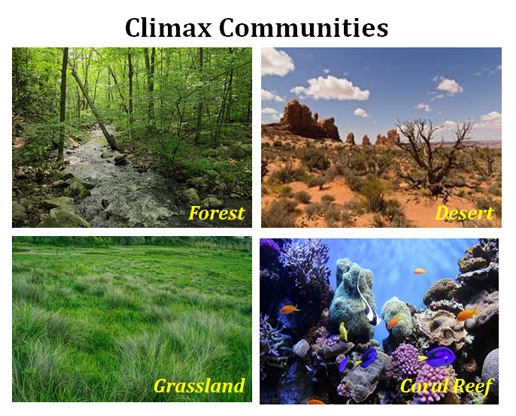
Different Types of Climaxes in an Ecological Succession:
(1). Climatic climax:
Ø In this climax, the climax community of the succession is determined by the climate of the region.
Ø The climatic climax will have only one climax community.
(2). Edaphic climax
Ø Here the climax community in the succession is determined by the soil (edaphic factor) of the region.
Ø The edaphic factors may include soil moisture, topography, soil texture and soil nutrients.
(3). Catastrophic climax:
Ø Here the climax community is vulnerable to many catastrophic events such as wildfire, snowfall and floods.
Ø The catastrophic factors replace the climax community completely and this area will be immediately invaded by new species.
Characteristics of a Climax Community
The climax community in a succession shows the following characteristics:
Ø The vegetation of the climax community will have high ecological amplitude.
Ø They possess high tolerance towards the environmental conditions.
Ø They show rich diversity in species composition.
Ø The species composition remains constant for many years.
Ø The community possesses a complex food chain system.
Ø The ecosystem will be balanced and self-sustainable.
Ø There will be equilibrium between gross primary productivity and respiration.
Ø The energy used from the sunlight and energy released after decomposition will be balanced.
| You may also like... | ||
|---|---|---|
| NOTES | QUESTION BANK | COMPETITIVE EXAMS. |
| PPTs | UNIVERSITY EXAMS | DIFFERENCE BETWEEN.. |
| MCQs | PLUS ONE BIOLOGY | NEWS & JOBS |
| MOCK TESTS | PLUS TWO BIOLOGY | PRACTICAL |
Ø The uptake of nutrients from the soil and the release of nutrients back to the soil by decomposition will be in equilibrium.
Ø The individuals of the community lost by its death are replaced by the individuals of the same species.
Ø The climax community is considered as the manifestation of the climate prevailed in the area.
Review Questions
Ø What is ecological succession?
Ø Explain the process of ecological succession.
Ø Differentiate community and population.
Ø What is meant by pioneer community? Give example
Ø What is seral community?
Ø Define sere
Ø What is meant by nudation? What are the causes of nudation?
Ø Define ecesis
Ø Describe competition in ecological suceesion.
Ø What is meant by climax community? Give examples
Ø What are the characteristics of climax community?


very much of great help
i give it 9/10